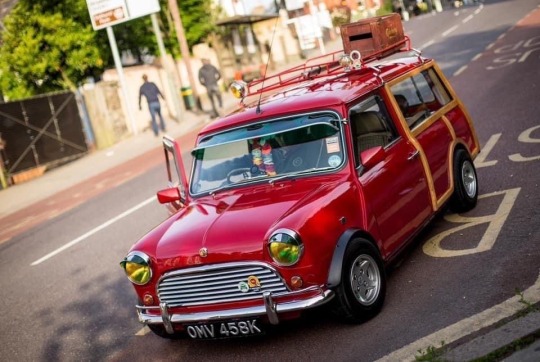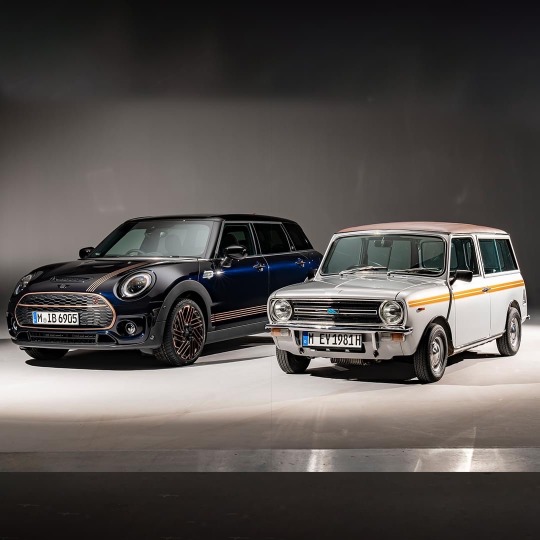#austin mini countryman
Text
In celebration of me just picking up a Toyota Altezza Gita/Lexus IS300 Sportcross what are some of your favourite wagons or shooting brakes
yOOOOOO!!!!
Okay now I have to ask, is it actually an imported Toyota or did you add that just for potential clarification?
I should give context for folx out there (apparently folx is a 'more friendly' spelling to some? oh the wild wonders of language):
y'all know how Lexus is a brand Toyota founded to move upmarket? Yeah, they didn't need to do that at home because Japan is much better protected from too-good-for-Toyotas-itis: I mean, if the emperor can drive (well, be driven in) Toyotas I am pretty sure you can afford to be seen in one. As a result, until 2005 Japan got Lexus models but not the Lexus brand, receiving them with Toyota branding instead (and different model names too, since the two letter acronyms were a Lexus thing).
To get to your question, though:
SEDANS I LIKE THE WAGON VERSION OF TOO
Toyota Altezza Gita/Lexus IS300 Sportcross (:D)

Indeed, I love your car! The JZ (for the folx: a six cylinder inline engine series widely regarded to be Toyota's best, capable of truly monstrous power with the right hands fiddling under the hood), the sporty, timeless styling, Toyota reliability and Lexus build quality, how no matter the market they refused to use a normal word for wagon, the chrome taillights so iconic they spawned an entire trend in 2000s car styling (especially aftermarket - hell, they still call them Altezza taillights!)... and that gauge cluster oh my GAWD
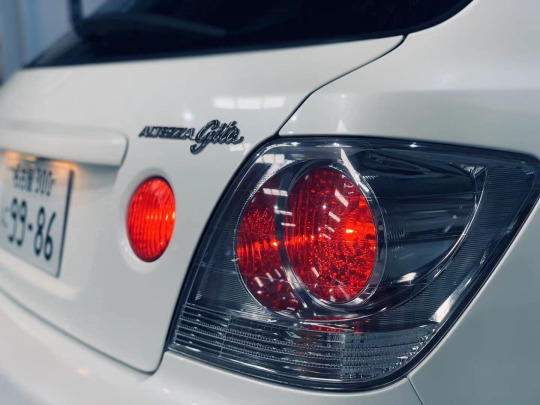
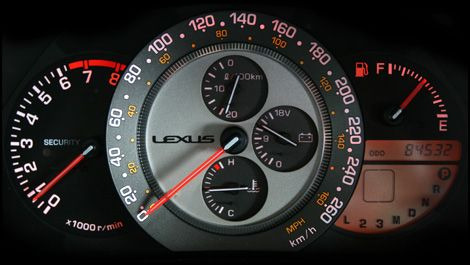
Mitsubishi Lancer Evolution VIII Wagon

I don't think the street equivalent of one of the most legendary rally cars (and certainly, with the Subaru Impreza WRX STI, part of the most legendary rally war) needs any introduction. I just wanted to make sure you knew that between '05 and '07 the closest thing to a rally car a dealer would sell you also came in wagon form.
In Japan only, of course. Because if Japan can't keep a cool thing to themselves, they'll make a cooler version to keep to themselves. Always.
Morris Mini Traveller/Austin Mini Countryman/Mini Clubman Estate
How do Mini fans do it, man

Who doesn't love the Mini? Who doesn't love the wagon's funky rear doors?

And who doesn't hate the time they tried to modernize its front end for the 70s? Me.

Like come on guys. You need to find within yourselves the intellectual honesty to admit that this fucks.

I rest my case. Let's move on.
Citroën DS Break/Familiale/Safari/Estate/Station Wagon
How do Citroën fans do it, man

Yes, the steering wheel had a single spoke - and by the way, that's it straight. It was angled like that so that, in a crash, it would guide your your body to the right - because there weren't seatbelts yet in 1955.
Yeah. This is a 1955 design.
The French are always been and likely always will be hellbent on being weird - and the Citroën DS is a distillation of the good that can come from that. It had pillarless windows! variable height suspension so effective you could only tell you had a flat by sound - and could change that flat by just having the suspension lift it for you! It had rear fenders held on by one bolt! Hell, in 1967, it got directional lights that turned with the wheels!!!!


IN 1967!!!!
Few cars have them right now today!!!
Oh, and also, most interesting to us right now, it has the greatest vibe gap between sedan and wagon I have ever seen. Allow me to illustrate (and slightly exacerbate by cherry picking examples).
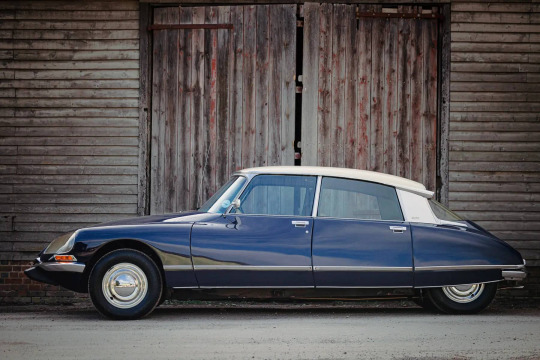
You get out of this with suit and tie and a watch you change the time of with felt tweezers.
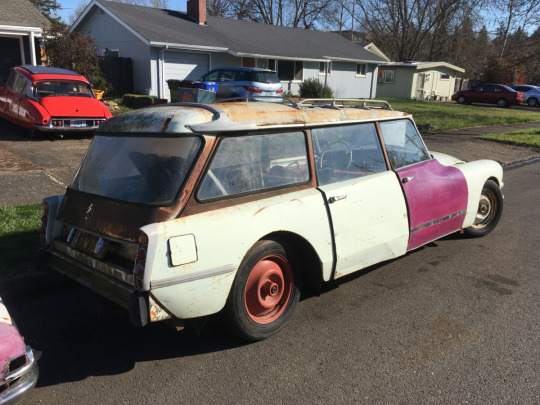
You get out of this with a lab coat, plane goggles, a propeller tophat and a concoction that violates a semester's worth of laws of physics.
And, potentially, seven of the biggest freaks the planet could muster, because yes, this could seat up to eight, thanks to a front bench, a middle bench, and trunk seats.
"You mean a third row?"
HAHA. NO.

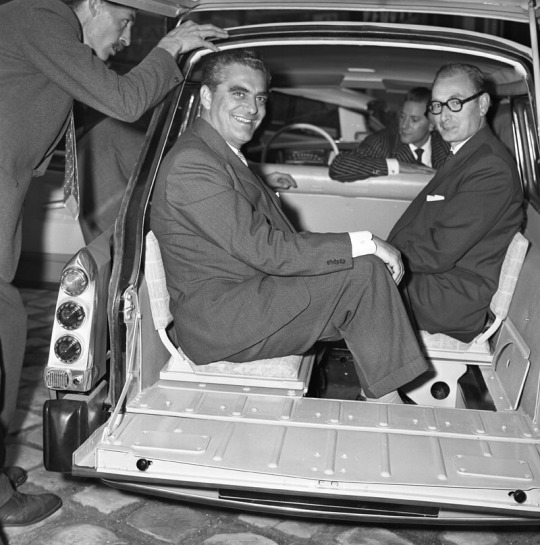
Honorable mentions:
Mazda 6, Subaru Impreza, Toyota Corolla KE70,
Audi RS4, BMW E30, Fiat 500 Giardinetta,
most '60s yankee landyachts that got a wagon,
and all the ones that escape me at this moment
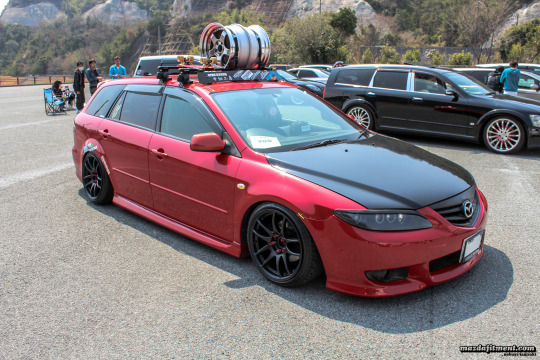


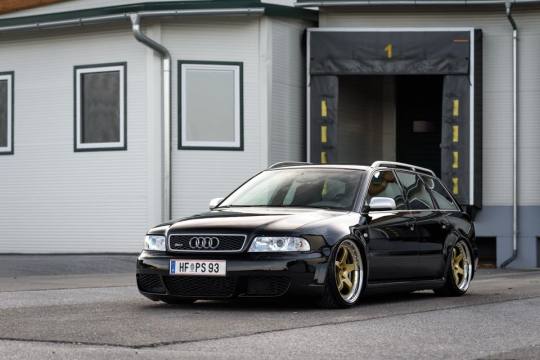
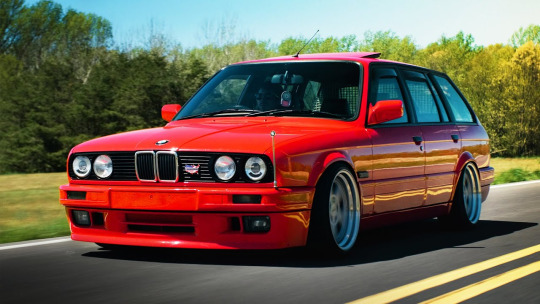
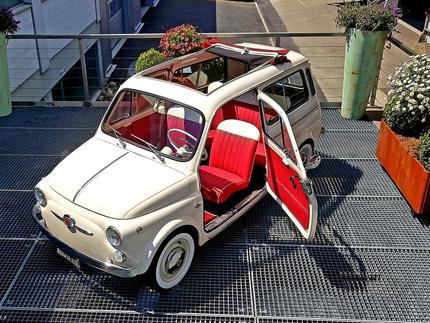
WAGONS I LIKE MORE THAN THE SEDAN VERSION
Audi RS6 (second generation)
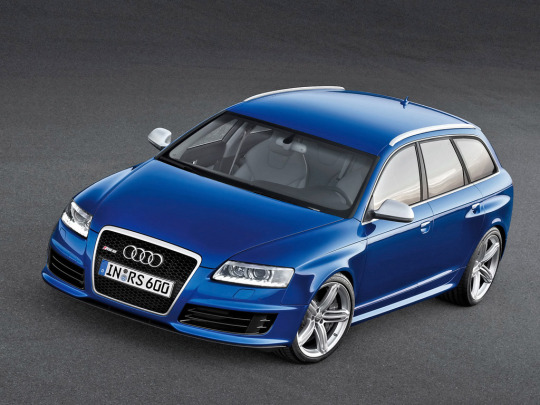
Here's what happened (presumably):
Audi had bought Lamborghini. Great! Now Lamborghinis could use Audi interior bits, a very welcome change because Lamborghini were not exactly the interior controls GOATs.
(To stick to a representative example and not be here all day, when set to Fahrenheit the Diablo's digital climate controls changed the temperature by two degree increments except between 63F and 64F and 72F and 73F. And at the extremes it said LOF and HIF because the F did not go away. So yeah.)
But this also gave Audi access to Lamborghini parts - and, a couple years in, one of the engineers told the others "Jo [German for "Yo"], there's gotta be something cool we can do with Lamborghini parts!"
And the other was like "Maybe we can make the new RS6 [Audian for Real Sporty version of the A6 executive sedan] with a Lambo V10! That'd be a fast fucking sedan."
And the first one replied "And a fast fucking wagon too!"
And their eyes locked, lighting up with villainous thrill.
I mean, I could wax lyrical about the all wheel drive and super expensy carbon ceramic brakes and the flared fenders et al but if this garbage 5 second clip does not convince you that this busts ass how could I.
youtube
Toyota Corolla E110

Well that's quite the jump.
How could I possibly be interested in a car like this? If cars were meals this would be a plate of warm water.
There is only one way to possibly get excited about a car this boring: personal significance.
And sure enough, my Yaris-pursuing father was instead upsold a Corolla exactly like this, discounted to empty the lot in preparation for its facelift - and one day he used it to drive my momma to a hospital, they got out of it in two, and some tribulations later they got back in it in three - third being a hot-off-the-press me.
This, then, was the car that was in the driveway through my stumbling infancy - and never hinted at letting us down. We then traded it for an Opel that gave us loads of trouble, the recipient traded it for an Audi that gave him loads of trouble, and on the Corolla kept getting passed on right to wherever it rests today, never letting anyone down - loyalty likely rewarded by a crusher turning it to mush. And I want another shot at doing this car right.
Okay, actually, there's another way to get excited about such a car: find out about the inevitable sick-ass Japan-only version. In this case Toyota figured they'd fit the Sprinter Carib (because Corolla wasn't near a silly enough name for the Japanese market) with a 20V 4A-GE Blacktop and a 6 speed manual, or in less technical terms "one of the greatest non-turbo powertrains of its size to ever graze a production car". Presumably just for the sake of keeping it Japan-only for the sake of annoying me personally.

Well, joke's on them, because my idea goes even harder: replicating the powertrain the hatchback version competed in World Rally Championship with - 4WD and all.

This but wagon, essentially.
And then bin it in a tree in 15 seconds like I always do on the rally sim.
Honorable mentions:
1970 Dodge Coronet SW, Nissan Stagea, Volvo 940/960 wagon (which I talked about in another post!),
and again all the others that I forgot.



The shooting brakes are gonna need their separate post because otherwise it hits the image limit :/
Links in blue are posts of mine explaining the words in question - if you liked this post, you might like those!
#submission#station wagons#lexus is sportcross#toyota altezza gita#mitsubishi lancer evolution viii#mitsubishi evo wagon#morris mini traveller#austin mini countryman#mini clubman estate#citroën ds break#ds familiale#ds safari#ds estate#ds station wagon#mazda 6 wagon#subaru impreza wagon#toyota corolla ke70 wagon#audi rs4 wagon#bmw e30 wagon#fiat 500 giardinetta#audi rs6 c6#lamborghini diablo#toyota corolla e110 wagon#toyota sprinter carib#toyota corolla wrc#dodge coronet#nissan stagea#volvo 940#volvo 960#YouTube
43 notes
·
View notes
Text
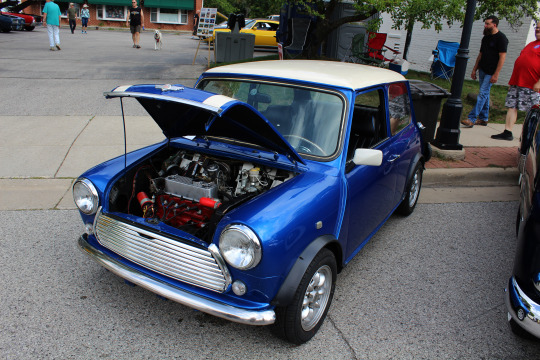
Mini Cooper at Cruisn' The Grove (2023) in Elm Grove, WI.
#stance#stanced#mini#mini cooper#cooper#mark i#mark ii#mark iii#mark iv#mark v#mark vi#mark vii#morris#morris mini#morris mini traveller#austin mini countryman#mini van#mini moke#mini pick-up#morris mini k#mini beach#mini cooper s#cooper s#mini clubman#1275gt#mini paceman#mini countryman#mini coupe#mini roadster#mini hatch
13 notes
·
View notes
Photo



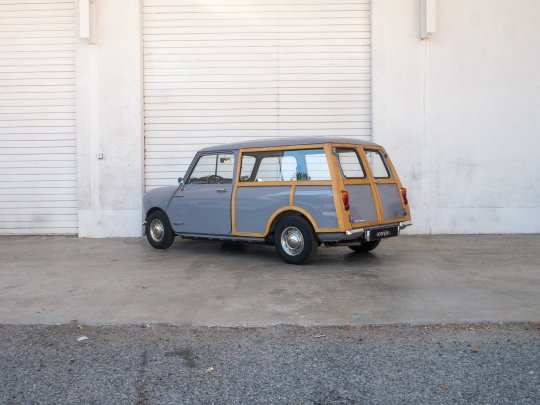






Austin Mini Countryman
The Mini is one of the most iconic popular cars, has been sold in millions and continues to be sold today. Star of the big cities or of the rally stages, the Austin Mini has shone in many areas thanks to its compact, modifiable body; the English proverb "less is more" suits this car. In an effort to adapt to its users, the mini is available in several versions more powerful, more adventurous, more luxurious...
Under the hood, the 4-cylinder engine with a one-liter displacement in horizontal position, an architecture due to the Austin Mini's creator, Alec Issigonis, starts without any problem and stabilizes very quickly, without any particular vibration. Once launched on the road, surrounded by vehicles twice as high and powerful, the Mini offers a satisfactory power for its weight with a regular, if not strong, thrust, without jerks. The gearbox is light and easy to use, pleasant to handle in urban traffic.
The Mini lives up to its name with its very restrained proportions. But this Clubman-born model has been transformed into a Countryman version, more "adventurous" and recognizable among thousand thanks to its wooden frame on the bodywork.
The minimalist dashboard displays all the instrumentation in the center of the dashboard, with large, round counters that are all functional. The rear seat can accommodate small children while the trunk belies the lack of space on these cars, very accessible thanks to its practical trunk opening. The carpets are in good condition as well as the plastics. The sliding windows contribute to the car's offbeat appearance.
22 notes
·
View notes
Text



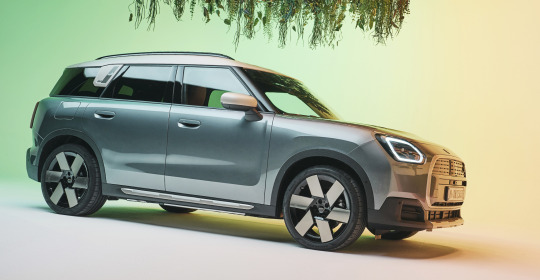


What a difference 58 years makes juxtaposition of Austin 1100/1300 Countryman, 1966 & Mini Countryman SE ALL4, 2024. The ADO 16 used the same (for the period) innovative transverse engine front wheel drive configuration as the Mini but sat a class above, while the contemporary Countryman is a crossover positioned above the Mini Cooper. The new 3rd generation Mini Countryman will be available with both internal combustion and all-electric powertrains. The all-electric Countryman is offered in two performance levels – E and SE ALL4 with, the combustion powered Countryman available in three levels – C, S ALL4 and JCW ALL4 models with first deliveries in February 2024.
#Mini#Austin#Austin Countryman#Mini Countyman#1966#2024#new cars#crossover#EV#electric car#electric crossover#ADO16#dead brands#countryman#IAA#BMC
115 notes
·
View notes
Text
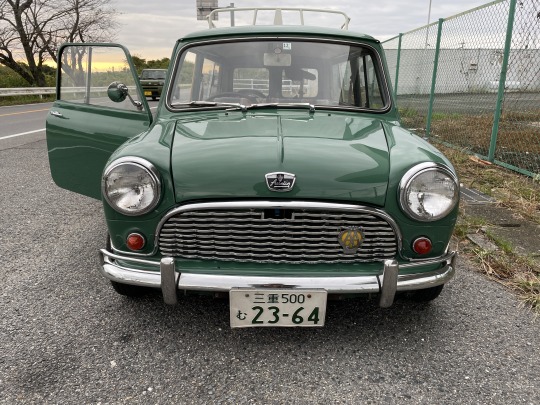
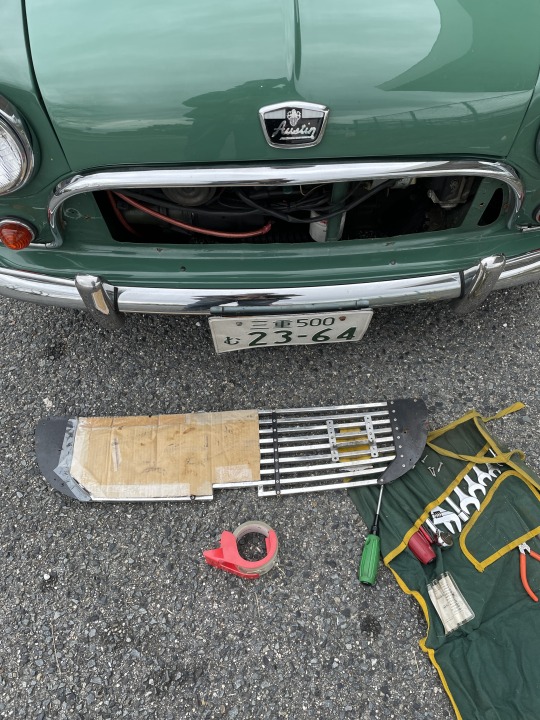
先週日曜日は気温も低くて自分も押し入れから一枚羽織るものを急遽引っ張りだしてきましたが、それならミニもオーバークール対策せなあかんということで、グリルの裏側にダンボールを貼り付けましたとさ。
0 notes
Text
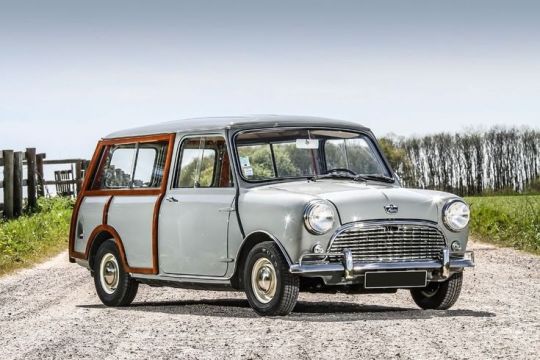


1960 Austin Mini Countryman
My tumblr-blogs: https://www.tumblr.com/blog/germancarssince1946 & https://www.tumblr.com/blog/frenchcarssince1946 & https://www.tumblr.com/blog/englishcarssince1946 & https://www.tumblr.com/blog/italiancarssince1946 & https://www.tumblr.com/blog/japanesecarssince1947
0 notes
Text
The hatchback body style remains widely popular today for its versatile cargo access and sporty profile. But what car first pioneered this practical body style, essentially birthing the hatchback as we know it? This guide explores the origins and earliest examples of hatchback cars that led to the design becoming mass-produced and mainstream.
Defining the Hatchback Car Body Style
First, let's outline the definitive characteristics of what qualifies a car as a hatchback:
Two box shape with shared passenger and cargo areas
Rear door provides full access to cargo space
Rear seat folds fully flat to maximize storage
Wheels positioned at corners to optimize interior room
Distinctive sloped rear roofline profile
The combination of the fold-down rear seat and wide opening rear door provides the utility that differentiates hatchbacks from traditional sedans or coupes.
Pinpointing the First True Hatchback Model
While some pre-war cars had rear openings, most historians credit the 1949 Aston Martin DB2 with pioneering the modern hatchback design. Key traits that set it apart:
Rear door opened upward via hinges at the roofline rather than a trunk lid
Body profile with continuous rear roof slope without separate trunk
Rear compartment accessed from rear door without divider
Rear seat designed to fold flat into the floor
The DB2 established the quintessential hatchback profile that became prevalent - no distinct trunk bulge or division from the rear seats. It incorporated now-standard traits like roof-hinged doors and folding rear seats. This groundbreaking combination helped it earn the title of the first true hatchback.
Why the DB2 Marked a Design Milestone
Prior to the DB2, no production automobile so seamlessly blended rear passenger and cargo space into one unified area accessed by an upward swinging rear door. Its smooth, continuous rear roofline running into the tail of the car was also a novelty for a rear-door vehicle.
The DB2's flexible cargo space and rear access via the sloped roofline door would go on to become hallmarks of all modern hatchback designs as other automakers followed suit. Aston Martin's innovative thinking represented a pioneering milestone in automotive engineering and functionality.
The Influence of Early Hatchback Concept Cars
A few notable concept cars in the decade prior to the DB2 also showed hatchback elements that previewed the style:
General Motors Le Sabre (1951)
Two box, sloped rear roof design
Rear seats that fold into rear floor area
Simca Cargo (1953)
Station wagon-inspired hatch opening over rear seat
Models called "Break" or "Commerciale"
Fiat 1100 Familiare (1956)
Wagon-like rear access over fold-down seat
Marketed as family/cargo vehicle
These designs generated discussion around blending utility and performance in new formats. Consumer interest helped pave the way for Aston Martin's defining DB2 production model.
Growth of Hatchback Popularity in the 1960s and 70s
After the DB2 proved the format could work, mass-market auto brands began offering affordable hatchback models appealing to mainstream buyers:
Renault 4 (1961)
Austin Mini Countryman (1961)
AMC Gremlin (1970)
Volkswagen Scirocco (1974)
Honda Civic (1973)
This proliferation of economy priced hatchbacks firmly established the body style in the industry and consumer consciousness. They became a standard rather than novelty model option.
Reviewing Pioneering Hatchback Contenders
Some mark alternative early cars as the "first" hatchbacks, though they lacked some definitive traits:
Citroen Traction Avant (1934)
Had a rear door but no fold-down rear seat dividing cargo area. Considered a sedan or saloon.
Renault 4CV (1946)
Inspired the Renault 4 but had enclosed trunk separated from cabin. Lacked unified cargo access of a true hatchback.
Kaiser-Frazer Vagabond (1953)
One of the earliest American hatchback efforts but never reached production.
Mercedes Benz 190SL (1955)
Had rear pass through from cabin to trunk but no shared uninterrupted cargo space.
Why the DB2 Stands Out From Early Hatchback-Like Vehicles
Previous models incorporated some hatchback elements but lacked key features like fold-down rear seats or unified rear cargo space fully incorporated into the body design. The DB2 brought these traits together in the complete package that set the template modern hatchbacks follow - an integrated rear storage accessed by an upward rear door at the sloped roofline. This innovative combination earns it the title of the first true hatchback.
The DB2 Hatchback's Lasting Legacy
The DB2 proved that utility and performance need not be mutually exclusive in an automobile. Its fresh thinking influenced hatchback development across Europe and Asia. Within 20 years, affordable mass-produced hatchbacks from brands like Honda and Volkswagen became commonplace worldwide.
Over 70 years after its debut, Aston Martin's pioneering DB2 remains appreciated as the original hatchback that started a trend which reshaped auto design forever. Its revolutionary rethink of rear storage access lives on in the millions of hatchback models enjoyed by drivers today.
FAQs
What was the first Japanese hatchback model?
The 1973 Honda Civic was the first Japanese-made hatchback, establishing the body style's popularity in the Japanese auto industry.
Were early hatchbacks based on wagons?
Yes, early hatchback concepts often drew inspiration from station wagons and shooting brakes for their cargo space.
Why did hatchbacks grow more common in the 1960s and 70s?
The increasing focus on affordability and functionality made hatchbacks appealing for economy car brands. Their versaility also suited the youth culture.
Did American automakers produce any early hatchbacks?
While not as quickly embraced as in Europe and Asia, American brands like AMC tried hatchback models in the 1960s and 70s. The AMC Gremlin was an early example.
When did hatchbacks become mainstream in North America?
Hatchbacks really went mainstream in the 1980s, with models like the VW Golf GTI and Mazda GLC. By the 1990s they were ubiquitous worldwide.
The post-war Aston Martin DB2 is considered the first production automobile to fully exemplify the hatchback formula - an innovative achievement that inspired the body style's rise worldwide.
#Wiack #Car #CarInsurance #CarRental #CarPrice #AutoLoans
0 notes
Text
The hatchback body style remains widely popular today for its versatile cargo access and sporty profile. But what car first pioneered this practical body style, essentially birthing the hatchback as we know it? This guide explores the origins and earliest examples of hatchback cars that led to the design becoming mass-produced and mainstream.
Defining the Hatchback Car Body Style
First, let's outline the definitive characteristics of what qualifies a car as a hatchback:
Two box shape with shared passenger and cargo areas
Rear door provides full access to cargo space
Rear seat folds fully flat to maximize storage
Wheels positioned at corners to optimize interior room
Distinctive sloped rear roofline profile
The combination of the fold-down rear seat and wide opening rear door provides the utility that differentiates hatchbacks from traditional sedans or coupes.
Pinpointing the First True Hatchback Model
While some pre-war cars had rear openings, most historians credit the 1949 Aston Martin DB2 with pioneering the modern hatchback design. Key traits that set it apart:
Rear door opened upward via hinges at the roofline rather than a trunk lid
Body profile with continuous rear roof slope without separate trunk
Rear compartment accessed from rear door without divider
Rear seat designed to fold flat into the floor
The DB2 established the quintessential hatchback profile that became prevalent - no distinct trunk bulge or division from the rear seats. It incorporated now-standard traits like roof-hinged doors and folding rear seats. This groundbreaking combination helped it earn the title of the first true hatchback.
Why the DB2 Marked a Design Milestone
Prior to the DB2, no production automobile so seamlessly blended rear passenger and cargo space into one unified area accessed by an upward swinging rear door. Its smooth, continuous rear roofline running into the tail of the car was also a novelty for a rear-door vehicle.
The DB2's flexible cargo space and rear access via the sloped roofline door would go on to become hallmarks of all modern hatchback designs as other automakers followed suit. Aston Martin's innovative thinking represented a pioneering milestone in automotive engineering and functionality.
The Influence of Early Hatchback Concept Cars
A few notable concept cars in the decade prior to the DB2 also showed hatchback elements that previewed the style:
General Motors Le Sabre (1951)
Two box, sloped rear roof design
Rear seats that fold into rear floor area
Simca Cargo (1953)
Station wagon-inspired hatch opening over rear seat
Models called "Break" or "Commerciale"
Fiat 1100 Familiare (1956)
Wagon-like rear access over fold-down seat
Marketed as family/cargo vehicle
These designs generated discussion around blending utility and performance in new formats. Consumer interest helped pave the way for Aston Martin's defining DB2 production model.
Growth of Hatchback Popularity in the 1960s and 70s
After the DB2 proved the format could work, mass-market auto brands began offering affordable hatchback models appealing to mainstream buyers:
Renault 4 (1961)
Austin Mini Countryman (1961)
AMC Gremlin (1970)
Volkswagen Scirocco (1974)
Honda Civic (1973)
This proliferation of economy priced hatchbacks firmly established the body style in the industry and consumer consciousness. They became a standard rather than novelty model option.
Reviewing Pioneering Hatchback Contenders
Some mark alternative early cars as the "first" hatchbacks, though they lacked some definitive traits:
Citroen Traction Avant (1934)
Had a rear door but no fold-down rear seat dividing cargo area. Considered a sedan or saloon.
Renault 4CV (1946)
Inspired the Renault 4 but had enclosed trunk separated from cabin. Lacked unified cargo access of a true hatchback.
Kaiser-Frazer Vagabond (1953)
One of the earliest American hatchback efforts but never reached production.
Mercedes Benz 190SL (1955)
Had rear pass through from cabin to trunk but no shared uninterrupted cargo space.
Why the DB2 Stands Out From Early Hatchback-Like Vehicles
Previous models incorporated some hatchback elements but lacked key features like fold-down rear seats or unified rear cargo space fully incorporated into the body design. The DB2 brought these traits together in the complete package that set the template modern hatchbacks follow - an integrated rear storage accessed by an upward rear door at the sloped roofline. This innovative combination earns it the title of the first true hatchback.
The DB2 Hatchback's Lasting Legacy
The DB2 proved that utility and performance need not be mutually exclusive in an automobile. Its fresh thinking influenced hatchback development across Europe and Asia. Within 20 years, affordable mass-produced hatchbacks from brands like Honda and Volkswagen became commonplace worldwide.
Over 70 years after its debut, Aston Martin's pioneering DB2 remains appreciated as the original hatchback that started a trend which reshaped auto design forever. Its revolutionary rethink of rear storage access lives on in the millions of hatchback models enjoyed by drivers today.
FAQs
What was the first Japanese hatchback model?
The 1973 Honda Civic was the first Japanese-made hatchback, establishing the body style's popularity in the Japanese auto industry.
Were early hatchbacks based on wagons?
Yes, early hatchback concepts often drew inspiration from station wagons and shooting brakes for their cargo space.
Why did hatchbacks grow more common in the 1960s and 70s?
The increasing focus on affordability and functionality made hatchbacks appealing for economy car brands. Their versaility also suited the youth culture.
Did American automakers produce any early hatchbacks?
While not as quickly embraced as in Europe and Asia, American brands like AMC tried hatchback models in the 1960s and 70s. The AMC Gremlin was an early example.
When did hatchbacks become mainstream in North America?
Hatchbacks really went mainstream in the 1980s, with models like the VW Golf GTI and Mazda GLC. By the 1990s they were ubiquitous worldwide.
The post-war Aston Martin DB2 is considered the first production automobile to fully exemplify the hatchback formula - an innovative achievement that inspired the body style's rise worldwide.
#Wiack #Car #CarInsurance #CarRental #CarPrice #AutoLoans
0 notes
Text
The hatchback body style remains widely popular today for its versatile cargo access and sporty profile. But what car first pioneered this practical body style, essentially birthing the hatchback as we know it? This guide explores the origins and earliest examples of hatchback cars that led to the design becoming mass-produced and mainstream.
Defining the Hatchback Car Body Style
First, let's outline the definitive characteristics of what qualifies a car as a hatchback:
Two box shape with shared passenger and cargo areas
Rear door provides full access to cargo space
Rear seat folds fully flat to maximize storage
Wheels positioned at corners to optimize interior room
Distinctive sloped rear roofline profile
The combination of the fold-down rear seat and wide opening rear door provides the utility that differentiates hatchbacks from traditional sedans or coupes.
Pinpointing the First True Hatchback Model
While some pre-war cars had rear openings, most historians credit the 1949 Aston Martin DB2 with pioneering the modern hatchback design. Key traits that set it apart:
Rear door opened upward via hinges at the roofline rather than a trunk lid
Body profile with continuous rear roof slope without separate trunk
Rear compartment accessed from rear door without divider
Rear seat designed to fold flat into the floor
The DB2 established the quintessential hatchback profile that became prevalent - no distinct trunk bulge or division from the rear seats. It incorporated now-standard traits like roof-hinged doors and folding rear seats. This groundbreaking combination helped it earn the title of the first true hatchback.
Why the DB2 Marked a Design Milestone
Prior to the DB2, no production automobile so seamlessly blended rear passenger and cargo space into one unified area accessed by an upward swinging rear door. Its smooth, continuous rear roofline running into the tail of the car was also a novelty for a rear-door vehicle.
The DB2's flexible cargo space and rear access via the sloped roofline door would go on to become hallmarks of all modern hatchback designs as other automakers followed suit. Aston Martin's innovative thinking represented a pioneering milestone in automotive engineering and functionality.
The Influence of Early Hatchback Concept Cars
A few notable concept cars in the decade prior to the DB2 also showed hatchback elements that previewed the style:
General Motors Le Sabre (1951)
Two box, sloped rear roof design
Rear seats that fold into rear floor area
Simca Cargo (1953)
Station wagon-inspired hatch opening over rear seat
Models called "Break" or "Commerciale"
Fiat 1100 Familiare (1956)
Wagon-like rear access over fold-down seat
Marketed as family/cargo vehicle
These designs generated discussion around blending utility and performance in new formats. Consumer interest helped pave the way for Aston Martin's defining DB2 production model.
Growth of Hatchback Popularity in the 1960s and 70s
After the DB2 proved the format could work, mass-market auto brands began offering affordable hatchback models appealing to mainstream buyers:
Renault 4 (1961)
Austin Mini Countryman (1961)
AMC Gremlin (1970)
Volkswagen Scirocco (1974)
Honda Civic (1973)
This proliferation of economy priced hatchbacks firmly established the body style in the industry and consumer consciousness. They became a standard rather than novelty model option.
Reviewing Pioneering Hatchback Contenders
Some mark alternative early cars as the "first" hatchbacks, though they lacked some definitive traits:
Citroen Traction Avant (1934)
Had a rear door but no fold-down rear seat dividing cargo area. Considered a sedan or saloon.
Renault 4CV (1946)
Inspired the Renault 4 but had enclosed trunk separated from cabin. Lacked unified cargo access of a true hatchback.
Kaiser-Frazer Vagabond (1953)
One of the earliest American hatchback efforts but never reached production.
Mercedes Benz 190SL (1955)
Had rear pass through from cabin to trunk but no shared uninterrupted cargo space.
Why the DB2 Stands Out From Early Hatchback-Like Vehicles
Previous models incorporated some hatchback elements but lacked key features like fold-down rear seats or unified rear cargo space fully incorporated into the body design. The DB2 brought these traits together in the complete package that set the template modern hatchbacks follow - an integrated rear storage accessed by an upward rear door at the sloped roofline. This innovative combination earns it the title of the first true hatchback.
The DB2 Hatchback's Lasting Legacy
The DB2 proved that utility and performance need not be mutually exclusive in an automobile. Its fresh thinking influenced hatchback development across Europe and Asia. Within 20 years, affordable mass-produced hatchbacks from brands like Honda and Volkswagen became commonplace worldwide.
Over 70 years after its debut, Aston Martin's pioneering DB2 remains appreciated as the original hatchback that started a trend which reshaped auto design forever. Its revolutionary rethink of rear storage access lives on in the millions of hatchback models enjoyed by drivers today.
FAQs
What was the first Japanese hatchback model?
The 1973 Honda Civic was the first Japanese-made hatchback, establishing the body style's popularity in the Japanese auto industry.
Were early hatchbacks based on wagons?
Yes, early hatchback concepts often drew inspiration from station wagons and shooting brakes for their cargo space.
Why did hatchbacks grow more common in the 1960s and 70s?
The increasing focus on affordability and functionality made hatchbacks appealing for economy car brands. Their versaility also suited the youth culture.
Did American automakers produce any early hatchbacks?
While not as quickly embraced as in Europe and Asia, American brands like AMC tried hatchback models in the 1960s and 70s. The AMC Gremlin was an early example.
When did hatchbacks become mainstream in North America?
Hatchbacks really went mainstream in the 1980s, with models like the VW Golf GTI and Mazda GLC. By the 1990s they were ubiquitous worldwide.
The post-war Aston Martin DB2 is considered the first production automobile to fully exemplify the hatchback formula - an innovative achievement that inspired the body style's rise worldwide.
#Wiack
0 notes
Text
The hatchback body style remains widely popular today for its versatile cargo access and sporty profile. But what car first pioneered this practical body style, essentially birthing the hatchback as we know it? This guide explores the origins and earliest examples of hatchback cars that led to the design becoming mass-produced and mainstream.
Defining the Hatchback Car Body Style
First, let's outline the definitive characteristics of what qualifies a car as a hatchback:
Two box shape with shared passenger and cargo areas
Rear door provides full access to cargo space
Rear seat folds fully flat to maximize storage
Wheels positioned at corners to optimize interior room
Distinctive sloped rear roofline profile
The combination of the fold-down rear seat and wide opening rear door provides the utility that differentiates hatchbacks from traditional sedans or coupes.
Pinpointing the First True Hatchback Model
While some pre-war cars had rear openings, most historians credit the 1949 Aston Martin DB2 with pioneering the modern hatchback design. Key traits that set it apart:
Rear door opened upward via hinges at the roofline rather than a trunk lid
Body profile with continuous rear roof slope without separate trunk
Rear compartment accessed from rear door without divider
Rear seat designed to fold flat into the floor
The DB2 established the quintessential hatchback profile that became prevalent - no distinct trunk bulge or division from the rear seats. It incorporated now-standard traits like roof-hinged doors and folding rear seats. This groundbreaking combination helped it earn the title of the first true hatchback.
Why the DB2 Marked a Design Milestone
Prior to the DB2, no production automobile so seamlessly blended rear passenger and cargo space into one unified area accessed by an upward swinging rear door. Its smooth, continuous rear roofline running into the tail of the car was also a novelty for a rear-door vehicle.
The DB2's flexible cargo space and rear access via the sloped roofline door would go on to become hallmarks of all modern hatchback designs as other automakers followed suit. Aston Martin's innovative thinking represented a pioneering milestone in automotive engineering and functionality.
The Influence of Early Hatchback Concept Cars
A few notable concept cars in the decade prior to the DB2 also showed hatchback elements that previewed the style:
General Motors Le Sabre (1951)
Two box, sloped rear roof design
Rear seats that fold into rear floor area
Simca Cargo (1953)
Station wagon-inspired hatch opening over rear seat
Models called "Break" or "Commerciale"
Fiat 1100 Familiare (1956)
Wagon-like rear access over fold-down seat
Marketed as family/cargo vehicle
These designs generated discussion around blending utility and performance in new formats. Consumer interest helped pave the way for Aston Martin's defining DB2 production model.
Growth of Hatchback Popularity in the 1960s and 70s
After the DB2 proved the format could work, mass-market auto brands began offering affordable hatchback models appealing to mainstream buyers:
Renault 4 (1961)
Austin Mini Countryman (1961)
AMC Gremlin (1970)
Volkswagen Scirocco (1974)
Honda Civic (1973)
This proliferation of economy priced hatchbacks firmly established the body style in the industry and consumer consciousness. They became a standard rather than novelty model option.
Reviewing Pioneering Hatchback Contenders
Some mark alternative early cars as the "first" hatchbacks, though they lacked some definitive traits:
Citroen Traction Avant (1934)
Had a rear door but no fold-down rear seat dividing cargo area. Considered a sedan or saloon.
Renault 4CV (1946)
Inspired the Renault 4 but had enclosed trunk separated from cabin. Lacked unified cargo access of a true hatchback.
Kaiser-Frazer Vagabond (1953)
One of the earliest American hatchback efforts but never reached production.
Mercedes Benz 190SL (1955)
Had rear pass through from cabin to trunk but no shared uninterrupted cargo space.
Why the DB2 Stands Out From Early Hatchback-Like Vehicles
Previous models incorporated some hatchback elements but lacked key features like fold-down rear seats or unified rear cargo space fully incorporated into the body design. The DB2 brought these traits together in the complete package that set the template modern hatchbacks follow - an integrated rear storage accessed by an upward rear door at the sloped roofline. This innovative combination earns it the title of the first true hatchback.
The DB2 Hatchback's Lasting Legacy
The DB2 proved that utility and performance need not be mutually exclusive in an automobile. Its fresh thinking influenced hatchback development across Europe and Asia. Within 20 years, affordable mass-produced hatchbacks from brands like Honda and Volkswagen became commonplace worldwide.
Over 70 years after its debut, Aston Martin's pioneering DB2 remains appreciated as the original hatchback that started a trend which reshaped auto design forever. Its revolutionary rethink of rear storage access lives on in the millions of hatchback models enjoyed by drivers today.
FAQs
What was the first Japanese hatchback model?
The 1973 Honda Civic was the first Japanese-made hatchback, establishing the body style's popularity in the Japanese auto industry.
Were early hatchbacks based on wagons?
Yes, early hatchback concepts often drew inspiration from station wagons and shooting brakes for their cargo space.
Why did hatchbacks grow more common in the 1960s and 70s?
The increasing focus on affordability and functionality made hatchbacks appealing for economy car brands. Their versaility also suited the youth culture.
Did American automakers produce any early hatchbacks?
While not as quickly embraced as in Europe and Asia, American brands like AMC tried hatchback models in the 1960s and 70s. The AMC Gremlin was an early example.
When did hatchbacks become mainstream in North America?
Hatchbacks really went mainstream in the 1980s, with models like the VW Golf GTI and Mazda GLC. By the 1990s they were ubiquitous worldwide.
The post-war Aston Martin DB2 is considered the first production automobile to fully exemplify the hatchback formula - an innovative achievement that inspired the body style's rise worldwide.
#Wiack
0 notes
Text
The hatchback body style remains widely popular today for its versatile cargo access and sporty profile. But what car first pioneered this practical body style, essentially birthing the hatchback as we know it? This guide explores the origins and earliest examples of hatchback cars that led to the design becoming mass-produced and mainstream.
Defining the Hatchback Car Body Style
First, let's outline the definitive characteristics of what qualifies a car as a hatchback:
Two box shape with shared passenger and cargo areas
Rear door provides full access to cargo space
Rear seat folds fully flat to maximize storage
Wheels positioned at corners to optimize interior room
Distinctive sloped rear roofline profile
The combination of the fold-down rear seat and wide opening rear door provides the utility that differentiates hatchbacks from traditional sedans or coupes.
Pinpointing the First True Hatchback Model
While some pre-war cars had rear openings, most historians credit the 1949 Aston Martin DB2 with pioneering the modern hatchback design. Key traits that set it apart:
Rear door opened upward via hinges at the roofline rather than a trunk lid
Body profile with continuous rear roof slope without separate trunk
Rear compartment accessed from rear door without divider
Rear seat designed to fold flat into the floor
The DB2 established the quintessential hatchback profile that became prevalent - no distinct trunk bulge or division from the rear seats. It incorporated now-standard traits like roof-hinged doors and folding rear seats. This groundbreaking combination helped it earn the title of the first true hatchback.
Why the DB2 Marked a Design Milestone
Prior to the DB2, no production automobile so seamlessly blended rear passenger and cargo space into one unified area accessed by an upward swinging rear door. Its smooth, continuous rear roofline running into the tail of the car was also a novelty for a rear-door vehicle.
The DB2's flexible cargo space and rear access via the sloped roofline door would go on to become hallmarks of all modern hatchback designs as other automakers followed suit. Aston Martin's innovative thinking represented a pioneering milestone in automotive engineering and functionality.
The Influence of Early Hatchback Concept Cars
A few notable concept cars in the decade prior to the DB2 also showed hatchback elements that previewed the style:
General Motors Le Sabre (1951)
Two box, sloped rear roof design
Rear seats that fold into rear floor area
Simca Cargo (1953)
Station wagon-inspired hatch opening over rear seat
Models called "Break" or "Commerciale"
Fiat 1100 Familiare (1956)
Wagon-like rear access over fold-down seat
Marketed as family/cargo vehicle
These designs generated discussion around blending utility and performance in new formats. Consumer interest helped pave the way for Aston Martin's defining DB2 production model.
Growth of Hatchback Popularity in the 1960s and 70s
After the DB2 proved the format could work, mass-market auto brands began offering affordable hatchback models appealing to mainstream buyers:
Renault 4 (1961)
Austin Mini Countryman (1961)
AMC Gremlin (1970)
Volkswagen Scirocco (1974)
Honda Civic (1973)
This proliferation of economy priced hatchbacks firmly established the body style in the industry and consumer consciousness. They became a standard rather than novelty model option.
Reviewing Pioneering Hatchback Contenders
Some mark alternative early cars as the "first" hatchbacks, though they lacked some definitive traits:
Citroen Traction Avant (1934)
Had a rear door but no fold-down rear seat dividing cargo area. Considered a sedan or saloon.
Renault 4CV (1946)
Inspired the Renault 4 but had enclosed trunk separated from cabin. Lacked unified cargo access of a true hatchback.
Kaiser-Frazer Vagabond (1953)
One of the earliest American hatchback efforts but never reached production.
Mercedes Benz 190SL (1955)
Had rear pass through from cabin to trunk but no shared uninterrupted cargo space.
Why the DB2 Stands Out From Early Hatchback-Like Vehicles
Previous models incorporated some hatchback elements but lacked key features like fold-down rear seats or unified rear cargo space fully incorporated into the body design. The DB2 brought these traits together in the complete package that set the template modern hatchbacks follow - an integrated rear storage accessed by an upward rear door at the sloped roofline. This innovative combination earns it the title of the first true hatchback.
The DB2 Hatchback's Lasting Legacy
The DB2 proved that utility and performance need not be mutually exclusive in an automobile. Its fresh thinking influenced hatchback development across Europe and Asia. Within 20 years, affordable mass-produced hatchbacks from brands like Honda and Volkswagen became commonplace worldwide.
Over 70 years after its debut, Aston Martin's pioneering DB2 remains appreciated as the original hatchback that started a trend which reshaped auto design forever. Its revolutionary rethink of rear storage access lives on in the millions of hatchback models enjoyed by drivers today.
FAQs
What was the first Japanese hatchback model?
The 1973 Honda Civic was the first Japanese-made hatchback, establishing the body style's popularity in the Japanese auto industry.
Were early hatchbacks based on wagons?
Yes, early hatchback concepts often drew inspiration from station wagons and shooting brakes for their cargo space.
Why did hatchbacks grow more common in the 1960s and 70s?
The increasing focus on affordability and functionality made hatchbacks appealing for economy car brands. Their versaility also suited the youth culture.
Did American automakers produce any early hatchbacks?
While not as quickly embraced as in Europe and Asia, American brands like AMC tried hatchback models in the 1960s and 70s. The AMC Gremlin was an early example.
When did hatchbacks become mainstream in North America?
Hatchbacks really went mainstream in the 1980s, with models like the VW Golf GTI and Mazda GLC. By the 1990s they were ubiquitous worldwide.
The post-war Aston Martin DB2 is considered the first production automobile to fully exemplify the hatchback formula - an innovative achievement that inspired the body style's rise worldwide.
#Wiack
0 notes
Text
The hatchback body style remains widely popular today for its versatile cargo access and sporty profile. But what car first pioneered this practical body style, essentially birthing the hatchback as we know it? This guide explores the origins and earliest examples of hatchback cars that led to the design becoming mass-produced and mainstream.
Defining the Hatchback Car Body Style
First, let's outline the definitive characteristics of what qualifies a car as a hatchback:
Two box shape with shared passenger and cargo areas
Rear door provides full access to cargo space
Rear seat folds fully flat to maximize storage
Wheels positioned at corners to optimize interior room
Distinctive sloped rear roofline profile
The combination of the fold-down rear seat and wide opening rear door provides the utility that differentiates hatchbacks from traditional sedans or coupes.
Pinpointing the First True Hatchback Model
While some pre-war cars had rear openings, most historians credit the 1949 Aston Martin DB2 with pioneering the modern hatchback design. Key traits that set it apart:
Rear door opened upward via hinges at the roofline rather than a trunk lid
Body profile with continuous rear roof slope without separate trunk
Rear compartment accessed from rear door without divider
Rear seat designed to fold flat into the floor
The DB2 established the quintessential hatchback profile that became prevalent - no distinct trunk bulge or division from the rear seats. It incorporated now-standard traits like roof-hinged doors and folding rear seats. This groundbreaking combination helped it earn the title of the first true hatchback.
Why the DB2 Marked a Design Milestone
Prior to the DB2, no production automobile so seamlessly blended rear passenger and cargo space into one unified area accessed by an upward swinging rear door. Its smooth, continuous rear roofline running into the tail of the car was also a novelty for a rear-door vehicle.
The DB2's flexible cargo space and rear access via the sloped roofline door would go on to become hallmarks of all modern hatchback designs as other automakers followed suit. Aston Martin's innovative thinking represented a pioneering milestone in automotive engineering and functionality.
The Influence of Early Hatchback Concept Cars
A few notable concept cars in the decade prior to the DB2 also showed hatchback elements that previewed the style:
General Motors Le Sabre (1951)
Two box, sloped rear roof design
Rear seats that fold into rear floor area
Simca Cargo (1953)
Station wagon-inspired hatch opening over rear seat
Models called "Break" or "Commerciale"
Fiat 1100 Familiare (1956)
Wagon-like rear access over fold-down seat
Marketed as family/cargo vehicle
These designs generated discussion around blending utility and performance in new formats. Consumer interest helped pave the way for Aston Martin's defining DB2 production model.
Growth of Hatchback Popularity in the 1960s and 70s
After the DB2 proved the format could work, mass-market auto brands began offering affordable hatchback models appealing to mainstream buyers:
Renault 4 (1961)
Austin Mini Countryman (1961)
AMC Gremlin (1970)
Volkswagen Scirocco (1974)
Honda Civic (1973)
This proliferation of economy priced hatchbacks firmly established the body style in the industry and consumer consciousness. They became a standard rather than novelty model option.
Reviewing Pioneering Hatchback Contenders
Some mark alternative early cars as the "first" hatchbacks, though they lacked some definitive traits:
Citroen Traction Avant (1934)
Had a rear door but no fold-down rear seat dividing cargo area. Considered a sedan or saloon.
Renault 4CV (1946)
Inspired the Renault 4 but had enclosed trunk separated from cabin. Lacked unified cargo access of a true hatchback.
Kaiser-Frazer Vagabond (1953)
One of the earliest American hatchback efforts but never reached production.
Mercedes Benz 190SL (1955)
Had rear pass through from cabin to trunk but no shared uninterrupted cargo space.
Why the DB2 Stands Out From Early Hatchback-Like Vehicles
Previous models incorporated some hatchback elements but lacked key features like fold-down rear seats or unified rear cargo space fully incorporated into the body design. The DB2 brought these traits together in the complete package that set the template modern hatchbacks follow - an integrated rear storage accessed by an upward rear door at the sloped roofline. This innovative combination earns it the title of the first true hatchback.
The DB2 Hatchback's Lasting Legacy
The DB2 proved that utility and performance need not be mutually exclusive in an automobile. Its fresh thinking influenced hatchback development across Europe and Asia. Within 20 years, affordable mass-produced hatchbacks from brands like Honda and Volkswagen became commonplace worldwide.
Over 70 years after its debut, Aston Martin's pioneering DB2 remains appreciated as the original hatchback that started a trend which reshaped auto design forever. Its revolutionary rethink of rear storage access lives on in the millions of hatchback models enjoyed by drivers today.
FAQs
What was the first Japanese hatchback model?
The 1973 Honda Civic was the first Japanese-made hatchback, establishing the body style's popularity in the Japanese auto industry.
Were early hatchbacks based on wagons?
Yes, early hatchback concepts often drew inspiration from station wagons and shooting brakes for their cargo space.
Why did hatchbacks grow more common in the 1960s and 70s?
The increasing focus on affordability and functionality made hatchbacks appealing for economy car brands. Their versaility also suited the youth culture.
Did American automakers produce any early hatchbacks?
While not as quickly embraced as in Europe and Asia, American brands like AMC tried hatchback models in the 1960s and 70s. The AMC Gremlin was an early example.
When did hatchbacks become mainstream in North America?
Hatchbacks really went mainstream in the 1980s, with models like the VW Golf GTI and Mazda GLC. By the 1990s they were ubiquitous worldwide.
The post-war Aston Martin DB2 is considered the first production automobile to fully exemplify the hatchback formula - an innovative achievement that inspired the body style's rise worldwide.
#Wiack
0 notes
Photo
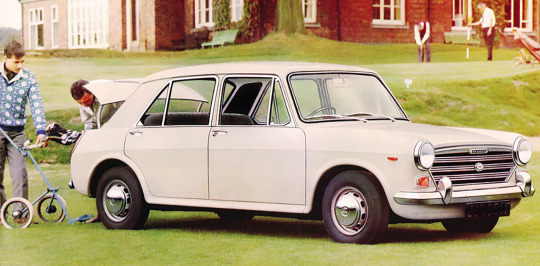
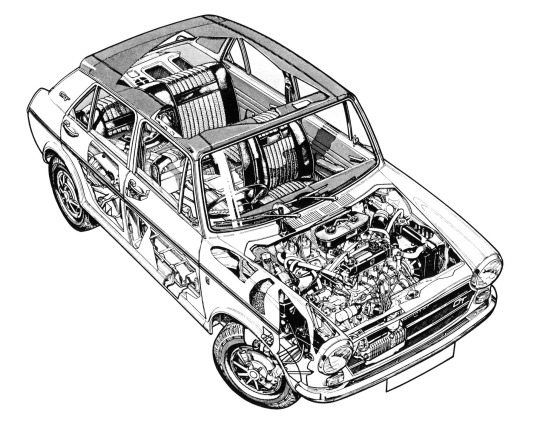
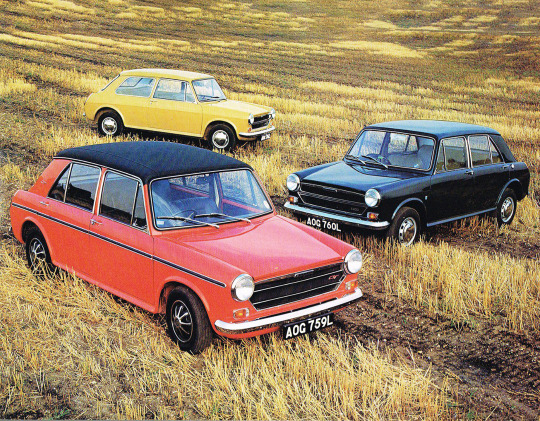






BMC ADO16, 1963-1974. The ADO16 (Amalgamated Drawing Office project no. 16) was engineered by Alec Issigonis. Following up his success with the Mini, BMC needed a larger and more sophisticated car using the same transverse engine, front wheel drive configuration but appealing to a broader market. Pininfarina was commissioned to design the car. They also featured a Hydrolastic interconnected fluid suspension system designed by Alex Moulton. They were sold under multiple brands and in 3 configurations, 2 & 4 door saloons and 3 door estate. From the top: Morris 1100, Austin 1100/1300/1300GT, Austin 1300 Countryman, MG 1300, Wolseley 1300, Riley Kestrel, Vanden Plas Princess 1300, Morris 1500 Nomad (bottom pic). The Austin/Morris versions were the UK’s best selling cars from 1963-1971 (except in 1967). The vast majority were powered by BMC’s A-series OHV engine in 1.1 and 1.3 litre versions. They were built and sold internationally including the US (marketed as the Austin America). For the Australian market (where they were manufactured) a 1500cc version using BMC’s OHC E-series engine was developed and in 1969 the Nomad 1500 5 door hatchback was introduced. The ADO16 is significant because it popularised the concept of a transverse engine driving the front wheels as a way of liberating more interior space within a compact overall package. BMC became BLMC and then British Leyland but they completely failed to capitalise on the success of the ADO16, replacing the Morris version with the rear wheel drive Marina and the Austin with the weirdly designed Allegro
#BMC#BMC ADO16#Morris 1100#Austin 1300#MG 1300#Riley Kestrel#Wolseley 1300#Vanden Plas Princess 1300#Morris 1500 Nomad#front wheel drive#transverse engine#Pininfarina#Alec Issigonis#badge engineering#auto history#dead brands#Austin America
130 notes
·
View notes
Text

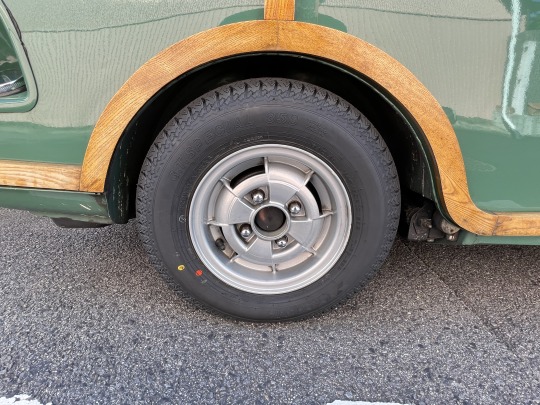

左後輪から時々異音がするのでエムズさん処に預けていた神取満君、ドラムブレーキをバラしてみたらパッドが欠けて中で暴れている状態だったみたいで、左のパッドと動作が怪しいホイールシリンダーを念のため左右とも交換いたしました。そして、ついでといってはなんですが、結構年数が経ったタイヤもこの機に交換させていただきました。ヨコハマタイヤから「GT Special 350」という、クラシックカー用のタイヤに10インチがあるということでそれにさせていただきましたとのことよ。
お店から出て走らせてみると、ちょっとだけ走りがシャキッとした感じがするとです。ありがたやありがたや。
0 notes
